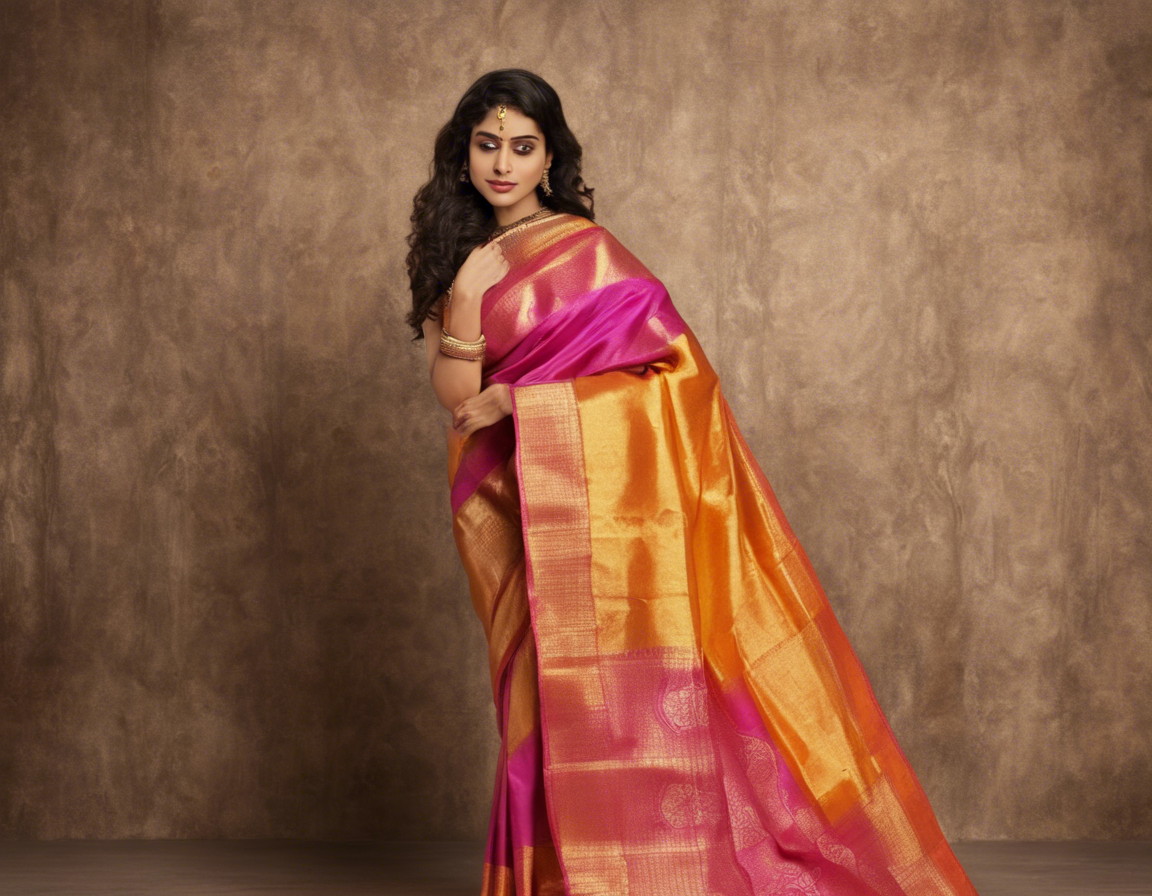Introduction
Kanjivaram sarees, also known as Kanchipuram sarees, are a symbol of elegance, tradition, and luxury in the world of Indian ethnic wear. Originating from the town of Kanchipuram in Tamil Nadu, these sarees are renowned for their rich colors, intricate designs, and superior quality silk. Worn by women on special occasions such as weddings, festivals, and parties, Kanjivaram sarees have a timeless appeal that has captured the hearts of fashion enthusiasts around the globe. Let’s delve deeper into the world of Kanjivaram sarees and explore what makes them so special.
The History of Kanjivaram Sarees
Origins: Kanjivaram sarees have a history that dates back several centuries. It is believed that the art of weaving silk in Kanchipuram was introduced by the Sage Markanda, who is said to have woven tissue from lotus fiber. Over time, the craft evolved, and weavers began using mulberry silk threads and real zari (gold and silver threads) to create the elaborate Kanjivaram sarees we know today.
Design: The hallmark of a Kanjivaram saree is its distinctive design elements. These sarees are characterized by bold and intricate patterns inspired by nature, temple architectural motifs, and mythological stories. The borders of Kanjivaram sarees are usually broad and adorned with traditional motifs like peacocks, elephants, and flowers, while the pallu (the hanging end of the saree) is intricately woven with gold and silver zari.
Weaving Process: Kanjivaram sarees are handwoven using traditional pit looms by skilled artisans who have inherited the craft from their ancestors. The sarees typically consist of three parts – the body, border, and pallu – each of which is woven separately and then meticulously interlocked to create a seamless and stunning masterpiece.
Types of Kanjivaram Sarees
Traditional: Traditional Kanjivaram sarees are known for their vibrant colors, heavy zari work, and classic motifs. These sarees are a popular choice for bridal wear and formal occasions due to their opulent look and feel.
Contemporary: To cater to modern tastes, designers have begun experimenting with contemporary motifs, color combinations, and weaving techniques while retaining the essence of traditional Kanjivaram sarees. These contemporary designs offer a fresh take on the classic saree, making them versatile for various occasions.
Lightweight: In recent years, lightweight Kanjivaram sarees have gained popularity for their comfort and ease of wearing. These sarees are woven using lighter silk threads and minimal zari work, making them ideal for casual events and daytime wear.
Popular Color Combinations: While Kanjivaram sarees are available in a myriad of colors, some popular color combinations include red and gold, green and maroon, blue and silver, and black and silver. Each color combination holds symbolic significance and is chosen based on cultural beliefs and personal preferences.
Maintenance and Care
Taking care of your Kanjivaram saree is essential to ensure its longevity and beauty. Here are some tips to keep your saree looking pristine:
- Dry Cleaning: It is recommended to dry clean your Kanjivaram saree to maintain its sheen and intricate work.
- Storage: Store your saree in a muslin cloth or cotton bag to prevent it from getting damaged or discolored.
- Avoid Direct Sunlight: Prolonged exposure to sunlight can fade the colors of your saree, so it is best to store it in a dark, cool place.
- Ironing: Use a low-heat setting on your iron or place a cotton cloth between the saree and the iron to avoid damaging the zari work.
Frequently Asked Questions (FAQs)
- How do I distinguish between a genuine Kanjivaram saree and a fake one?
- Look for the silk mark certification on the saree, which guarantees the authenticity of the silk used.
-
Genuine Kanjivaram sarees are handwoven, so check for irregularities in the weave pattern that indicate it is a machine-made imitation.
-
Are Kanjivaram sarees only suitable for weddings and special occasions?
-
While Kanjivaram sarees are popular for weddings and festivals, there are lightweight and contemporary designs that can be worn for casual events as well.
-
Can Kanjivaram sarees be worn in different draping styles?
-
Yes, Kanjivaram sarees can be draped in various styles such as the traditional Nivi drape, Gujarati drape, or Bengali drape to suit different preferences.
-
Do Kanjivaram sarees come in different silk qualities?
-
Yes, Kanjivaram sarees are available in different silk qualities ranging from pure silk to silk blends, each varying in price and texture.
-
What is the significance of the zari work in Kanjivaram sarees?
-
Zari work in Kanjivaram sarees symbolizes prosperity, tradition, and elegance. The intricate gold and silver thread work adds a touch of luxury to the saree.
-
Can Kanjivaram sarees be passed down through generations?
-
Yes, Kanjivaram sarees are known for their durability and timeless appeal, making them ideal heirloom pieces to pass down to future generations.
-
Are there any eco-friendly options available in Kanjivaram sarees?
- Some designers are now using organic silk and natural dyes to create eco-friendly Kanjivaram sarees that are sustainable and environmentally conscious.
Conclusion
Kanjivaram sarees have stood the test of time as a symbol of sophistication and grace in Indian fashion. With their intricate weaving techniques, rich colors, and timeless designs, Kanjivaram sarees continue to be a favorite choice for women looking to make a statement at special occasions. Whether you opt for a traditional red and gold Kanjivaram or a contemporary lightweight design, these sarees are sure to add a touch of elegance to your wardrobe for years to come.
